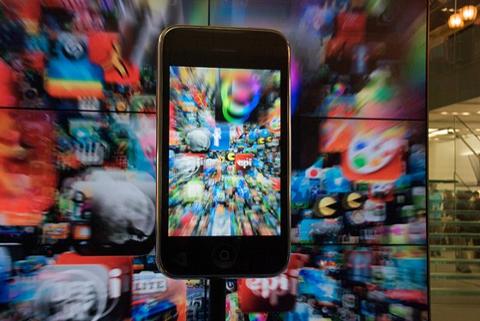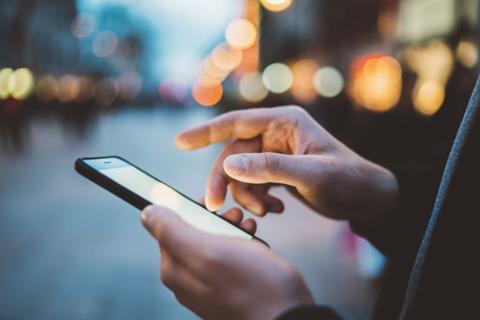[caption id="attachment_138519" align="aligncenter" width="1360"]

App Store doesn't want your jenky apps.[/caption] Publishing apps for Android or iOS means you either go through Google’s Play Store or Apple’s App Store. In addition to the numerous other changes those companies have made to their respective app ecosystems, their approach to "bad apps" is also morphing. It’s hard to nail down what a ‘bad’ app is. Google and Apple don't seem to agree here, either. Apple’s recent App Store Guideline changes added one interesting rule:
4.2.6: Apps created from a commercialized template or app generation service will be rejected.
In failing to narrow its scope on "bad" apps, Apple’s answer is to pinch the hose at
a source. Template services are often used to quickly release cloned apps, but are equally popular for small businesses that wish to have a native mobile app. Apple has always had a ‘do not copy’ rule, which code-less app building services naturally violate to some degree, but 4.2.6 is still a bit opaque. Sarah Alberg, a designer at UNIT partners, took to a
forum to voice her distaste for this rule. “Apple has rejected an app my team designed using BiznessApps, and just notified us that our appeal is also rejected because the original rejection was valid via 4.2.6,” she wrote. “Even the reps on the phone with me could see that the app was fully unique, not a copycat in any way, but just because it was designed on a skeleton structure set up by our commercial template we were using, it has been rejected." This sort of rejection can cost developers a lot of wasted time and effort. "Countless hours of work, so much money," Alberg continued. "And for what? Rejecting my team's app does nothing to help Apple. It shouldn't just be for the very rich or for developers themselves to have an app.” Plenty ‘build your own app without coding!’ services exist, but Alberg’s experience begs another question: what do we do when a design framework, style or layout becomes popular? It’s entirely possible Apple’s algorithms simply catch these DIY app building services based on the structure and style of their code; but there’s a synergy around services that
take a design and surface it as code, too. Rule 4.2.6 seems to ask that apps try to avoid some of the tactics that lead to mainstream success, which is antithetical to a decade of developers publishing to the App Store. Bizness Apps was able to make changes to satisfy the App Store's rules, but some DIY platforms don't offer post-production support.

Google’s efforts are different. Rather than cut the stream of bad apps off at the faucet, it’s simply going to let them suffer in the ether. It’s also not concerned with style or design. Rather, Google’s efforts to dismiss bad actors has everything to do with functionality. Via the
Android Developers Blog, the company states: “As part of our continued effort to deliver the best possible Google Play experience, we recently enhanced our search and discovery algorithms to reflect app quality. This results in higher quality apps being surfaced in the Play Store more than similar apps of lower quality (e.g., apps that exhibit more frequent crashes). The change has had a positive impact on engagement -- we've seen that people go on to use higher quality apps more and uninstall them less.” It points out that half of one-star reviews are related to an app’s stability. Sidelining poor apps is probably something Google had on the proverbial back burner for some time. With its
purchase of Fabric, Google gifted developers a robust suite of tools to ensure their apps were performant. In its blog post, the company reminds developers to use ‘
Android Vitals,’ a tool introduced at I/O 2017 for monitoring stability, crashes and battery usage. The companies' different methodologies are searching for the same solution. Bad apps – however we want to define them – are not only dime-a-dozen copycats, but ultimately prone to crashes and draining battery life. (This was also why Apple
decided to cut off 32-bit apps.) Unfortunately, Google seems more interested in pushing bad apps down in search results as opposed to getting rid of them altogether. This bolsters the overall Play Store numbers, but nobody cares about how many apps are in that storefront, save for 30 seconds at
Google I/O when it’s mentioned during the keynote. Both Apple and Google are striving for better quality in their respective app stores, that much is clear. Which has the better solution is largely philosophical: do you want fewer items to scroll past, or is it best to let the popular ones rise to the top? As we enter a new realm of mobile VR and AR, less just might be more.
 App Store doesn't want your jenky apps.[/caption] Publishing apps for Android or iOS means you either go through Google’s Play Store or Apple’s App Store. In addition to the numerous other changes those companies have made to their respective app ecosystems, their approach to "bad apps" is also morphing. It’s hard to nail down what a ‘bad’ app is. Google and Apple don't seem to agree here, either. Apple’s recent App Store Guideline changes added one interesting rule:
App Store doesn't want your jenky apps.[/caption] Publishing apps for Android or iOS means you either go through Google’s Play Store or Apple’s App Store. In addition to the numerous other changes those companies have made to their respective app ecosystems, their approach to "bad apps" is also morphing. It’s hard to nail down what a ‘bad’ app is. Google and Apple don't seem to agree here, either. Apple’s recent App Store Guideline changes added one interesting rule:
 Google’s efforts are different. Rather than cut the stream of bad apps off at the faucet, it’s simply going to let them suffer in the ether. It’s also not concerned with style or design. Rather, Google’s efforts to dismiss bad actors has everything to do with functionality. Via the Android Developers Blog, the company states: “As part of our continued effort to deliver the best possible Google Play experience, we recently enhanced our search and discovery algorithms to reflect app quality. This results in higher quality apps being surfaced in the Play Store more than similar apps of lower quality (e.g., apps that exhibit more frequent crashes). The change has had a positive impact on engagement -- we've seen that people go on to use higher quality apps more and uninstall them less.” It points out that half of one-star reviews are related to an app’s stability. Sidelining poor apps is probably something Google had on the proverbial back burner for some time. With its purchase of Fabric, Google gifted developers a robust suite of tools to ensure their apps were performant. In its blog post, the company reminds developers to use ‘Android Vitals,’ a tool introduced at I/O 2017 for monitoring stability, crashes and battery usage. The companies' different methodologies are searching for the same solution. Bad apps – however we want to define them – are not only dime-a-dozen copycats, but ultimately prone to crashes and draining battery life. (This was also why Apple decided to cut off 32-bit apps.) Unfortunately, Google seems more interested in pushing bad apps down in search results as opposed to getting rid of them altogether. This bolsters the overall Play Store numbers, but nobody cares about how many apps are in that storefront, save for 30 seconds at Google I/O when it’s mentioned during the keynote. Both Apple and Google are striving for better quality in their respective app stores, that much is clear. Which has the better solution is largely philosophical: do you want fewer items to scroll past, or is it best to let the popular ones rise to the top? As we enter a new realm of mobile VR and AR, less just might be more.
Google’s efforts are different. Rather than cut the stream of bad apps off at the faucet, it’s simply going to let them suffer in the ether. It’s also not concerned with style or design. Rather, Google’s efforts to dismiss bad actors has everything to do with functionality. Via the Android Developers Blog, the company states: “As part of our continued effort to deliver the best possible Google Play experience, we recently enhanced our search and discovery algorithms to reflect app quality. This results in higher quality apps being surfaced in the Play Store more than similar apps of lower quality (e.g., apps that exhibit more frequent crashes). The change has had a positive impact on engagement -- we've seen that people go on to use higher quality apps more and uninstall them less.” It points out that half of one-star reviews are related to an app’s stability. Sidelining poor apps is probably something Google had on the proverbial back burner for some time. With its purchase of Fabric, Google gifted developers a robust suite of tools to ensure their apps were performant. In its blog post, the company reminds developers to use ‘Android Vitals,’ a tool introduced at I/O 2017 for monitoring stability, crashes and battery usage. The companies' different methodologies are searching for the same solution. Bad apps – however we want to define them – are not only dime-a-dozen copycats, but ultimately prone to crashes and draining battery life. (This was also why Apple decided to cut off 32-bit apps.) Unfortunately, Google seems more interested in pushing bad apps down in search results as opposed to getting rid of them altogether. This bolsters the overall Play Store numbers, but nobody cares about how many apps are in that storefront, save for 30 seconds at Google I/O when it’s mentioned during the keynote. Both Apple and Google are striving for better quality in their respective app stores, that much is clear. Which has the better solution is largely philosophical: do you want fewer items to scroll past, or is it best to let the popular ones rise to the top? As we enter a new realm of mobile VR and AR, less just might be more. 

